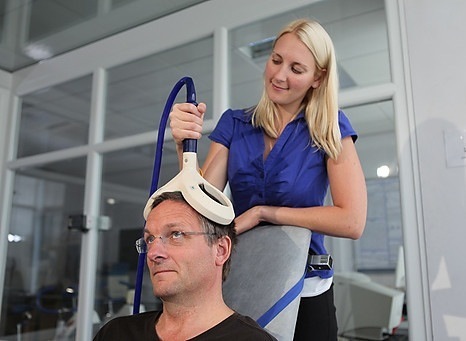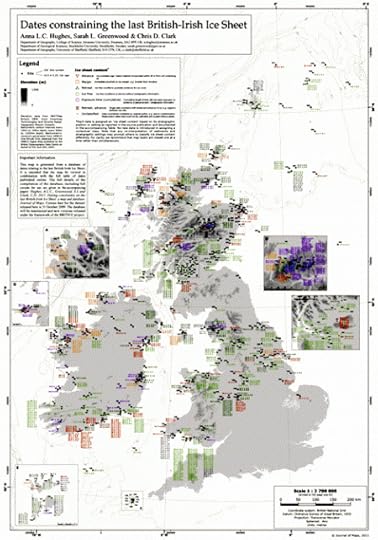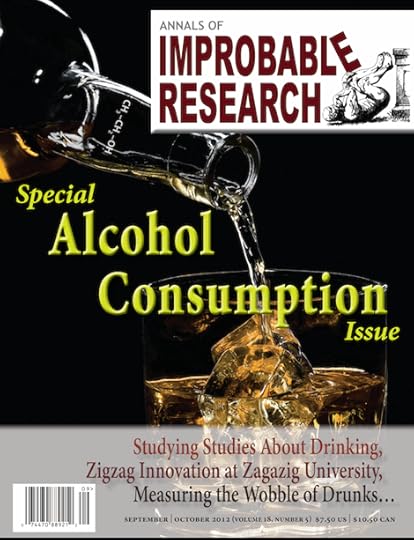Marc Abrahams's Blog, page 541
October 20, 2012
Adam Perzynski joins Hair Club (LFHCfS)
Adam Perzynski has joined the Luxuriant Flowing Hair Club for Scientists (LFHCfS). He says:
When I tell people I am a sociologist they say, “You even look like a professor!” Admittedly on occasion I encounter a colleague who thinks I am homeless. A month or so ago I was contemplating dropping these locks, but now that I found out about this club, I am going to hold onto my tremendous mane for the foreseeable future. I am a sociologist at Case Western Reserve University and MetroHealth Medical Center. I am research methodologist who conducts behavioral and social science research in the School of Medicine, but my locks and I flourish most when teaching an undergraduate course I developed at CWRU titled, “Society through Online Video.”.
Adam T. Perzynski, PhD, LFHCfS
Center for Health Care Research and Policy
Case Western Reserve University at MetroHealth Medical Center
Cleveland, Ohio, USA


Acoustics experiments in a Dutch concert hall
Investigator Diana Issidorides alerts us to this “series of video-experiments with motto “Everything sounds more beautiful in the Concertgebouw.” Issidorides notes that the videos are in Dutch, but says “Non-Dutch speakers will get it too!”

Use-Your-Head Research Photo of the Week
This week’s Use-Your-Head Research Photo shows Rosie Twomey of the University of Brighton engaging in “TMS (Transcranial Magnetic Stimulation) to initiate a muscular response.” Twomey’s graduate work centers on “Investigation into the Neurophysiological determinants of fatigue in graded hypoxia.”
The photo is from BBC-Two’s Horizon program. The head is credited to Michael Mosley.

October 19, 2012
Frigid contraints (British, mapped)
Vaguely in the tradition of the theatrical play “No Sex Please. We’re British” comes this monograph:
“Dating constraints on the last British-Irish Ice Sheet: a map and database“, Hughes, A.L.C, Greenwood, S.L. and Clark, C.D., v2011, 2011, 156-183. 10.4113/jom.2011.1145.

Psychology: Importance of a pipe
 Today’s Psychology Perception Question:
Today’s Psychology Perception Question:
Look at this video of a man describing several activities. In the video [as in the still image here], the man holds a pipe in on hand. The question: Can you tell whether the man’s pipe is lit or not?
[UNRELATED NOTE: You will see that, in the video, the man himself appears to be lit.]
BONUS: The man is named Fred Trueman. Here’s some background on him [by Scott Murray, in The Guardian.

Improbable on Science Friday today: Things That Annoy Him
 I’m going to be on NPR’s Science Friday program today. We’ll talk about one professor’s fascination with things that annoy him.
I’m going to be on NPR’s Science Friday program today. We’ll talk about one professor’s fascination with things that annoy him.
That professor has published nearly 100 reports about things that annoy him. The reports themselves are not annoying — each report is short (typically just one or two pages) and clear.
This segment will be at the end of hour 2 of the program.

October 18, 2012
More food-derived medical terminology: Peaches and cream

Peaches – image from Wikimedia Commons
We continue where we left off in the land of culinary medical metaphors: Humans are known to form organisations which study tissues that weigh only 20 – 30 grams. That’s the average mass of the thyroid gland in an adult which is located in the neck region.
Sometimes under activity of the thyroid gland (hypothyroidism) can result in a skin color that resembles peaches and cream in look.
BONUS: Here are a peaches and cream song and recipe

Tracking down the Getulian dog
In 1551 the Swiss naturalist Conrad Gessner published his meisterwerk “Historia Animalium” ,[*1]. The book featured dozens of illustrations of curious animals – including the so-called Getulian dog (Canis getulus). Many of the other dogs which the book described and pictured (e.g. the Greyhound and the Spaniel) are still very much around nearly half a millennium later – but where, oh where, is the Getulian?
A possible clue turned up 105 years later, alongside a strikingly similar illustration [*2] of the mysterious Canid which was published in : ‘The history of four-footed beasts and serpents’ by Edward Topsell.
Topsell’s accompanying description revealed that the Getulian dog was still alive-and-well at the time – and living in England, more than two thousand kilometres away from its homeland, Getulia [*3]. It apparently had shaggy hair, a short tail, a curved back, and a sharp black face resembling a hedgehog. But Topsell’s alternative name for the dog ‘The Mimick’ ( “… apt to imitate all things it sees, for which cause some have thought that it was conceived by an ape …“ ) might provide a plausible clue to the dog’s subsequent disappearance – and maybe even an alternate identity too? (Improbable spoiler here)
Notes:
[*1] 240 plates from the book can be downloaded (58 MB in zipped jpeg format) courtesy the Fondo Antiguo at the Universidad de Sevilla, Spain.
[*2] The illustration was left/right reversed from the original, presumably during the woodcut copying process – though curiously, many of the other copied illustrations were not.
[*3] Getulia (a.k.a. Gaetulia) was the (now archaic) name given to a district of the interior of Northern Africa, bordering the Atlas Mountains.

Magazine: “Alcohol Consumption” issue
 The special Alcohol Consumption issue (vol. 18, no. 5) of the magazine (the Annals of Improbable Research) is now online.
The special Alcohol Consumption issue (vol. 18, no. 5) of the magazine (the Annals of Improbable Research) is now online.
It’s got lots about Studying Studies About Drinking, and Zigzag Innovation at Zagazig University, and Measuring the Wobble of Drunks—and much more.
The pleasing-paper version was mailed to subscribers a short while ago. Click on the magazine cover (below) to download a free PDF, or buy a high-quality PDF. Or subscribe to the paper version. Mel (right) says it’s swell.

October 17, 2012
Economists’ advice for bank robbers
 When economists train their sights on robbers, the point traditionally is to study those who loot on the grandest, most legal scale and who are called “financiers”, and also (if there be consulting fees) to assist those persons.
When economists train their sights on robbers, the point traditionally is to study those who loot on the grandest, most legal scale and who are called “financiers”, and also (if there be consulting fees) to assist those persons.
Economists Barry Reilly [pictured here] of the University of Sussex, and Neil Rickman and Robert Witt of the University of Surrey, went against that tradition. They stole a hard look at the lowest class of bank robbers, the ones who physically go into bank branches, grab cash, and literally leg it. Reilly, Rickman and Witt got access – exclusive and confidential access, they proudly confide – to data from the British Bankers’ Association about bank robberies. Recently they published a study called Robbing Banks: Crime Does Pay – But Not Very Much….
So begins this week’s Improbable Research column in The Guardian.

Marc Abrahams's Blog
- Marc Abrahams's profile
- 14 followers



























